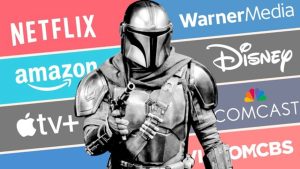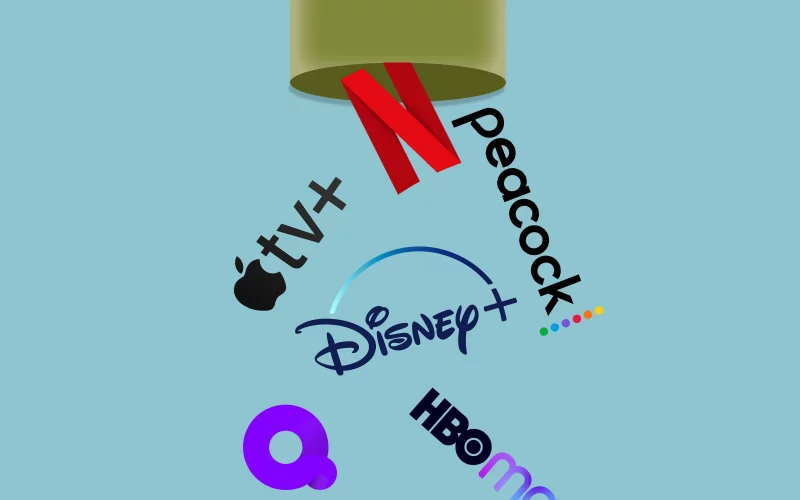Introduction
The advent of streaming services has revolutionized the way audiences consume media. The so-called “Streaming Wars” have intensified as major players like Netflix, Amazon Prime Video, Disney+, HBO Max, and Apple TV+ vie for viewer attention and subscription dollars. This competition has brought about significant changes in both the quality and variety of content available to consumers. This article delves into the multifaceted impact of the Streaming Wars on content quality and variety, offering an informative overview of the current landscape and its implications for the future.
The Genesis of the Streaming Wars

The Streaming Wars began in earnest with the rise of Netflix, which transitioned from a DVD rental service to a streaming giant. As Netflix’s subscriber base grew, other companies took notice and launched their own streaming platforms. Amazon Prime Video and Hulu were among the first to follow suit, but the landscape has since expanded to include Disney+, HBO Max, Apple TV+, Peacock, and more.
Content Quality: A Double-Edged Sword
-
Increased Investment in Original Content
One of the most notable impacts of the Streaming Wars is the substantial investment in original content. Streaming platforms are pouring billions of dollars into the creation of original series, films, and documentaries. This influx of capital has led to higher production values, innovative storytelling, and the ability to attract top-tier talent.
Case Study: Netflix
Netflix has been at the forefront of this trend, investing heavily in original content. Shows like “Stranger Things,” “The Crown,” and “The Witcher” have not only garnered critical acclaim but also attracted large audiences, setting a high bar for competitors.
-
The Rise of Prestige TV
The competition among streaming services has also given rise to what is often referred to as “Prestige TV.” These are high-quality, often serialized dramas that aim for critical acclaim and awards recognition. Shows like HBO’s “Game of Thrones” and Disney+’s “The Mandalorian” exemplify this trend, offering cinematic production values and complex storytelling.
-
Potential Downsides
However, the focus on high-quality original content can also have downsides. The pressure to constantly produce hits can lead to creative burnout and a reliance on formulas that have proven successful in the past. Additionally, not all investments pay off, and some high-budget projects fail to resonate with audiences, leading to financial losses.
Variety: A Cornucopia of Choices

-
Diverse Genres and Niches
The Streaming Wars have also led to an explosion in the variety of content available. Platforms are catering to a wide array of tastes and preferences, offering everything from niche documentaries to mainstream blockbusters. This diversity is a boon for consumers, who have more choices than ever before.
Case Study: Amazon Prime Video
Amazon Prime Video has taken a broad approach, offering a mix of original content, licensed films, and TV shows. The platform’s diverse library includes everything from critically acclaimed series like “The Marvelous Mrs. Maisel” to niche offerings like “The Expanse.”
-
Global Content
Another significant impact of the Streaming Wars is the increased availability of international content. Platforms are acquiring and producing shows and films from around the world, making it easier for audiences to access foreign-language content.
Case Study: Netflix’s Global Reach
Netflix has been particularly aggressive in this area, investing in content from countries like South Korea, India, and Spain. Shows like “Money Heist” (Spain), “Sacred Games” (India), and “Kingdom” (South Korea) have found global audiences, breaking down cultural barriers and broadening viewers’ horizons.
-
The Downside: Content Overload
While the variety of content is generally positive, it can also lead to content overload. With so many options available, consumers may find it difficult to decide what to watch, leading to decision fatigue. Additionally, the sheer volume of content can make it challenging for quality shows and films to find their audience.
The Role of Algorithms and Data Analytics

-
Personalized Recommendations
One of the ways streaming platforms are addressing content overload is through the use of algorithms and data analytics. These technologies help to personalize recommendations, making it easier for users to discover content that aligns with their preferences.
Case Study: Netflix’s Recommendation Engine
Netflix’s recommendation engine is one of the most sophisticated in the industry. By analyzing user behavior, Netflix can suggest content that is likely to appeal to individual viewers, thereby enhancing the user experience and increasing viewer engagement.
-
The Ethical Dilemma
However, the reliance on algorithms also raises ethical questions. There is a risk that personalized recommendations can create echo chambers, limiting exposure to diverse viewpoints and reinforcing existing preferences. Additionally, the use of data analytics raises privacy concerns, as platforms collect and analyze vast amounts of user data.
The Future of the Streaming Wars

-
Consolidation and Partnerships
As the Streaming Wars continue, we may see increased consolidation and partnerships among platforms. Smaller services may merge with larger ones, or form alliances to compete more effectively. This could lead to a more streamlined user experience, but may also reduce the diversity of content available.
-
Technological Innovations
Technological advancements will also play a crucial role in shaping the future of streaming. Innovations in areas like virtual reality (VR), augmented reality (AR), and artificial intelligence (AI) could revolutionize the way we consume content, offering new and immersive experiences.
-
Regulatory Challenges
Finally, the Streaming Wars will likely face regulatory challenges. Governments around the world are scrutinizing the power and influence of major streaming platforms, and new regulations may be introduced to address issues like data privacy, content moderation, and market competition.
Conclusion
The Streaming Wars have had a profound impact on the quality and variety of content available to consumers. While the increased investment in original content and the diversity of offerings are generally positive developments, there are also potential downsides, including creative burnout, content overload, and ethical concerns related to data analytics. As the landscape continues to evolve, it will be crucial for both platforms and regulators to navigate these challenges carefully to ensure a vibrant and diverse media ecosystem.
In summary, the Streaming Wars have ushered in a new era of media consumption, characterized by unprecedented levels of investment, innovation, and variety. While the future remains uncertain, one thing is clear: the way we watch TV and films will never be the same again.











